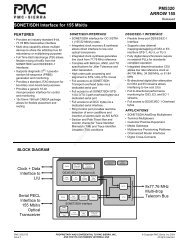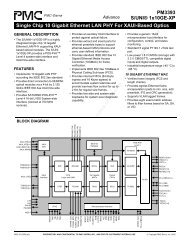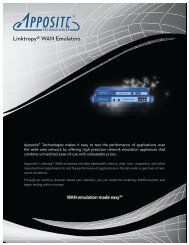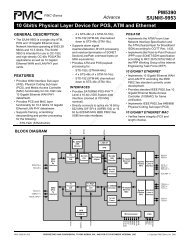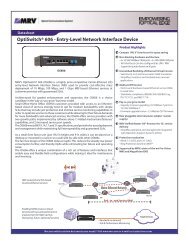Architecture, Engineering, and Related Services [NAICS 5413]
Architecture, Engineering, and Related Services [NAICS 5413]
Architecture, Engineering, and Related Services [NAICS 5413]
Create successful ePaper yourself
Turn your PDF publications into a flip-book with our unique Google optimized e-Paper software.
Chicago’s largest architectural <strong>and</strong> engineering firms with Upstate New York-based Cannon Design<br />
(Lynch, 2009). At the time of the merger, the combined revenues of the two firms would have made it<br />
the 14th largest architectural firm in the U.S. The majority of mergers <strong>and</strong> acquisitions taking place in<br />
this environment are motivated by the quest to increase financial, operational <strong>and</strong> geographical<br />
opportunities. Those transactions that are driven by growth rather than financial rescue are more<br />
likely to thrive moving forward.<br />
Another strategy that firms have taken to deal with the loss of business in recent years <strong>and</strong> increased<br />
competition for existing projects is to create strategic alliances (Beck, 2012). Strategic alliances are<br />
partnerships established between firms that do not involve money. Each firm maintains a separate<br />
identity <strong>and</strong> its autonomy, but the strategic alliance provides the organizations involved with the<br />
opportunity to leverage each other’s resources to generate new business ideas <strong>and</strong> take advantage of<br />
opportunities in a more integrated manner. This has been a popular alternative to the merger &<br />
acquisitions approach in dealing with the economic downturn. Some strategic alliances involve the<br />
creation of a completely new legal entity to facilitate cohesiveness <strong>and</strong> build credibility with clients.<br />
SIGNIFICANT TRENDS & CHALLENGES<br />
There are several current developments in the industry that will continue to have a significant<br />
impact on the state of the industry moving forward.<br />
• Sustainable energy <strong>and</strong> design is necessary <strong>and</strong> expected. It is no longer a question of whether<br />
a building should be designed sustainably, but rather how sustainability can be integrated<br />
into the design, construction <strong>and</strong> long-term maintenance of a building. The National<br />
Architectural Accrediting Board has begun to include m<strong>and</strong>ates which require architecture<br />
schools to include sustainable design within their curriculum, meaning the next generation<br />
of architects <strong>and</strong> designers will be taught to consider sustainability in every aspect of their<br />
projects (NAAB, 2011).<br />
• Increased globalization will prompt greater collaboration between firms. Larger architecture<br />
firms may have branch offices in various countries <strong>and</strong> a substantial amount of clients <strong>and</strong><br />
projects abroad. Yet many international architects who wish to design projects within the<br />
U.S. will continue to partner with U.S. based firms. Because licensing requirements in the U.S.<br />
are significantly different than those in other countries, a U.S. based firm may serve as<br />
“architect of record” for a project, which means the name of this firm will be listed on the<br />
building permit <strong>and</strong> assumes the responsibility <strong>and</strong> liability “of a project including the<br />
design, the production of construction documents <strong>and</strong> construction observation” (AIA Code<br />
of Ethics, 2004).<br />
• Technical knowledge about Building Information Modeling (BIM) becomes a requirement for<br />
architects as projects become increasing data driven. The buildingSMARTalliance, the nonprofit,<br />
non-governmental council which is developing national st<strong>and</strong>ards for BIM defines<br />
Business Information Modeling (BIM) as “a digital representation of physical <strong>and</strong> functional<br />
characteristics of a facility. A BIM is a shared knowledge resource for information about a<br />
facility forming a reliable basis for decisions during its life-cycle; defined as existing from<br />
earliest conception to demolition.” BIM is increasingly becoming the way that stakeholders<br />
such as architects, engineers <strong>and</strong> contractors manage a building throughout its lifecycle. The<br />
2


![Architecture, Engineering, and Related Services [NAICS 5413]](https://img.yumpu.com/34014793/3/500x640/architecture-engineering-and-related-services-naics-5413.jpg)




